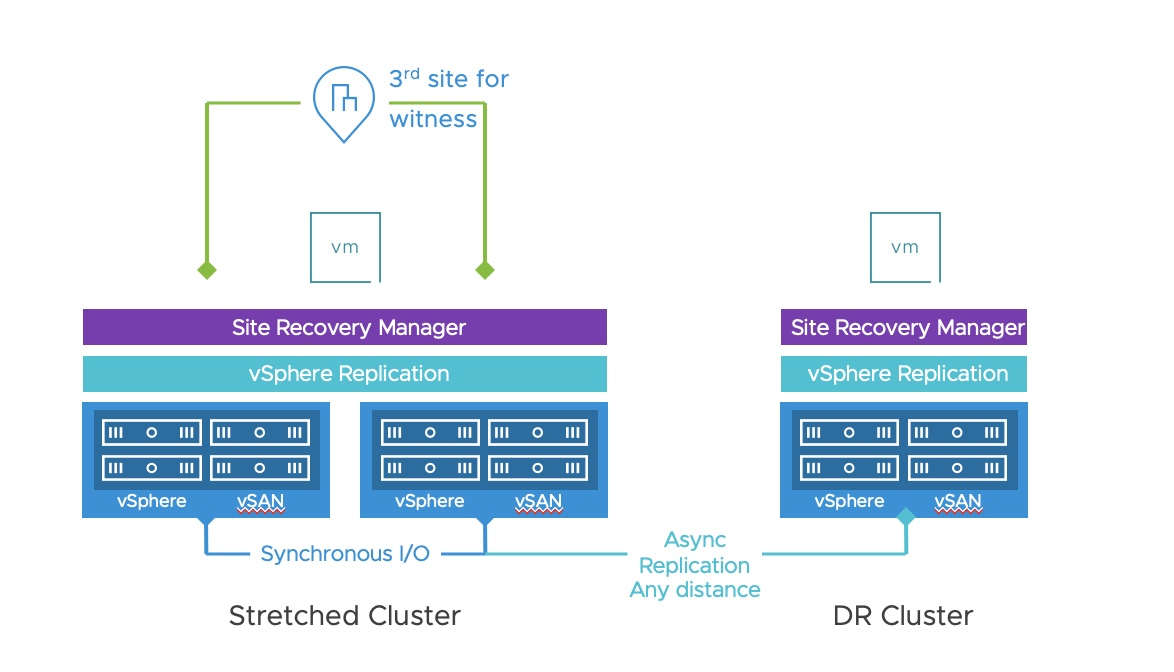Do I need to chose between a vSAN stretched cluster, or SRM?

Planning for disaster recovery and availability is often a trade-off of cost, recovery point objective (RPO), recovery time objective (RTO). A strategy that needs the highest availability, but also needs business continuity for a regional disaster may need to combine multiple protection technologies. Site Recovery Manager provides best in class geo area protection, while stretched clusters provide best in class metro area failure protection. These technologies are fully compatible and supported together.

Local Metro Failure Protection
Stretched clusters extend the vSAN cluster from a single site to two sites for a higher level of availability and intersite load balancing. Failover between sites is fully automatic and this failure happens with a "zero", meaning zero data is lost on this failover event. The challenge is stretched clusters are limited by a maximum site-to-site latency of 5ms. The speed of light in fiber often limits stretched clusters to 50-60 miles of direct dark fiber. For cases where you are concerned about a local fire, flood or circuit outage this protection is best in class. For concerns that impact large geographic areas (Large scale grid failure, hurricanes etc), asynchronous replication technologies need to be added to provide additional failure protection.
Geographic Failure Protection
Site Recovery Manager for disaster recovery orchestration is not limited by geographic distance. Replication to a remote site is as simple as configuring vSphere Replication protection groups. Layered on top of a stretched cluster, these technologies can complement each other to provide the best in automatic failover protection while also being able to with confidence restore systemic failure. Alternatively, customers without a remote location to restore from VMware Disaster Recovery as a Service can complement the vSAN stretched cluster.
